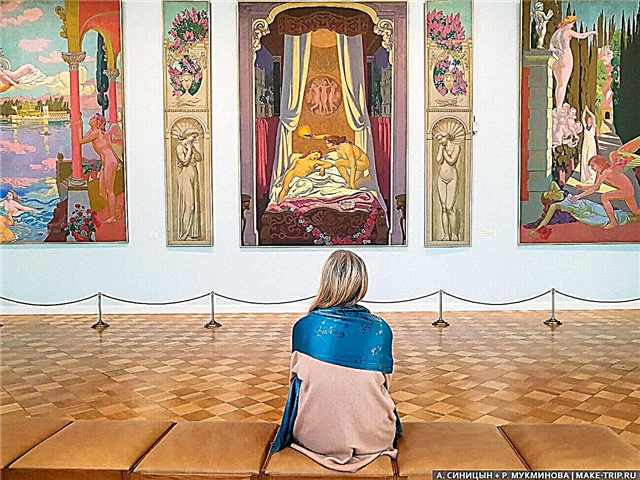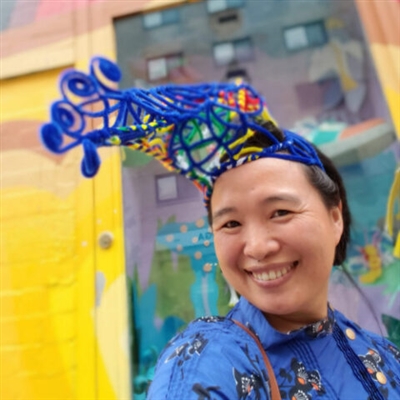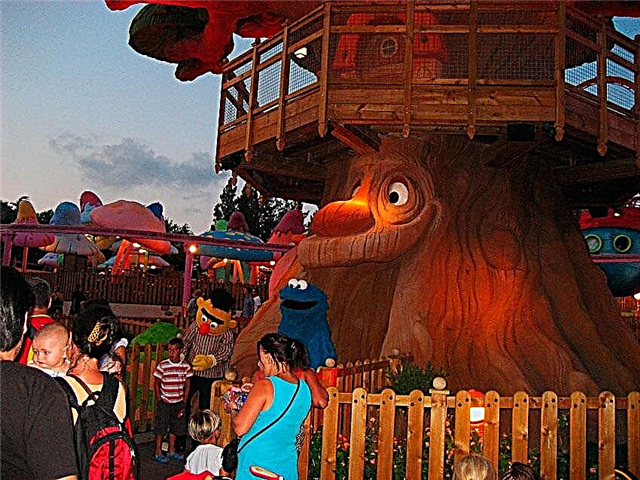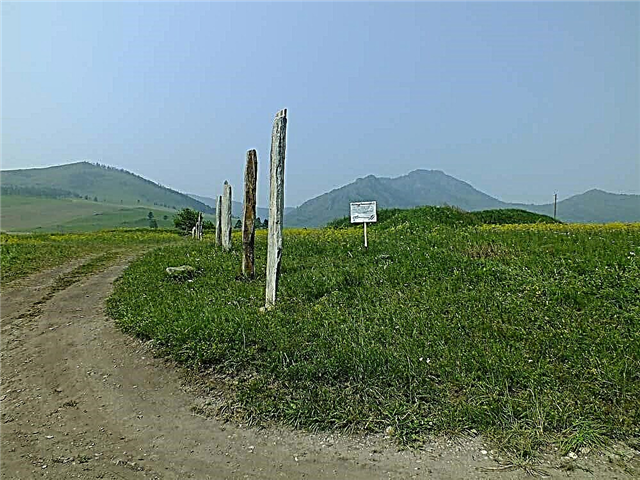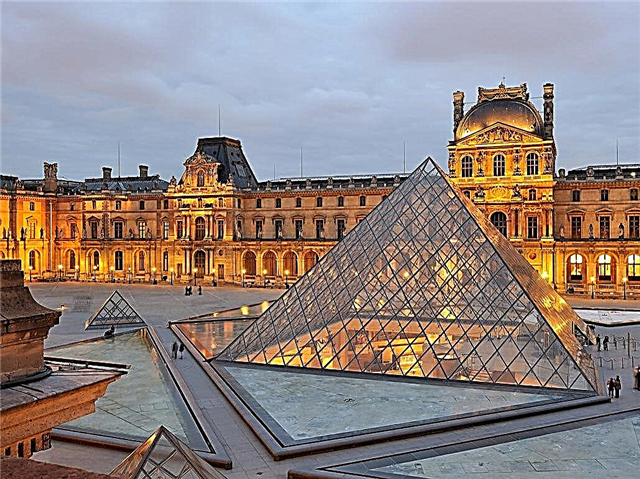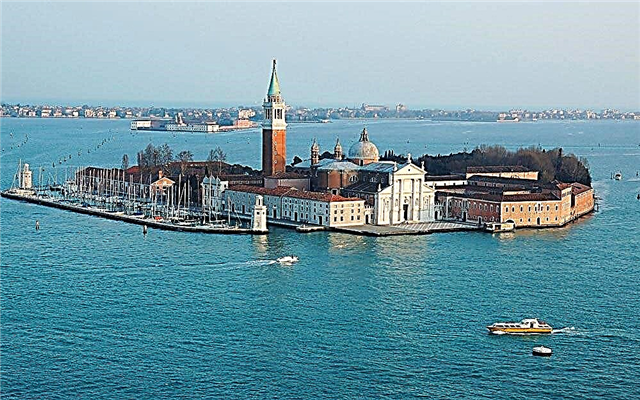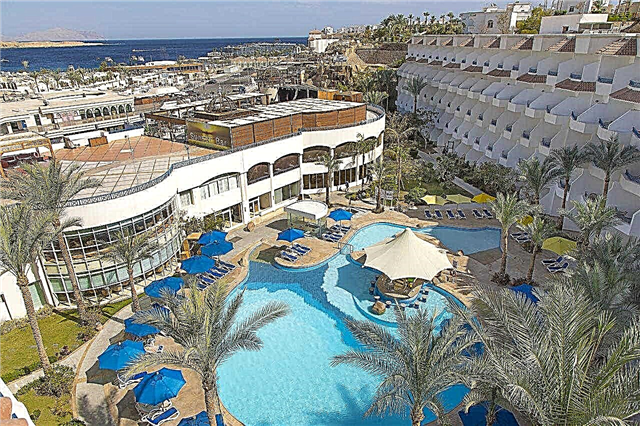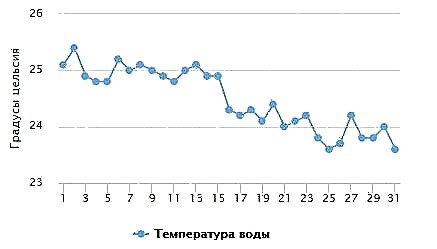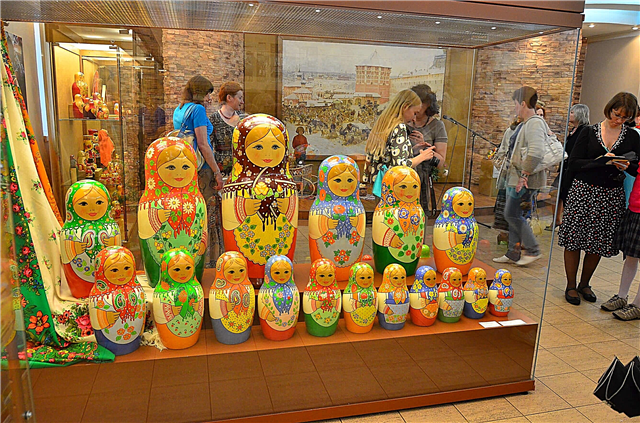A city equally popular with tourists and pilgrims. Tens of thousands of believers come to Sergiev Posad to venerate the relics of St. Sergius of Radonezh. The city is named in his honor, many significant places are associated with his name. Radonezhsky is considered to be the founder of the Trinity-Sergius Lavra, a male monastery known throughout the world as a major religious center with ancient and beautiful architecture.
The city is included in the popular tourist route "Golden Ring". And above all, it is famous for its ancient churches and temples. However, there is something to see in it besides the churches. The collection of unusual collections will be appreciated by tourists visiting the toy museum or the museum of bells of Russia. You can get acquainted with the place where Russian masters created masterpieces of literature and painting among the picturesque nature in the Abramtsevo estate.
The most interesting and beautiful places
List, photo with names and descriptions of popular attractions of Sergiev Posad. He will help you plan routes for exploring the city in 1-3 days.
Trinity-Sergius Lavra
One of the most significant sights of Sergiev Posad, as well as one of the main spiritual centers of Russian Orthodoxy. There are more than 50 buildings in the monastery - it is difficult to inspect them even in one day. The monastery was founded in 1337 and its buildings are under the protection of UNESCO. The most ancient building in the monastery is the Trinity Cathedral. The largest building is the Cathedral of the Assumption of the Mother of God of the 16th century.

Read about all the top places in the region: the main attractions of the Moscow region.
Sergiev Posad Museum-Reserve
Formed in 1920. The expositions are based on the values and historical monuments of the Trinity-Sergius Lavra. One can get acquainted with Russian culture and history of the city, from the XIV century to the present, in one of the four branches of the museum. On the territory of the Lavra there is the Sacristy, the exhibition halls of the main building on Krasnoarmeyskaya Street, the Local History Department and the “Horse yard” complex are located separately.

Rattle key
Located 20 km from the city near the village of Vzglyadnevo. The spring water is enriched with radon and is considered curative. According to legend, the waterfall arose after the sincere prayers of Sergei Radonezhsky, so the key is a place of attraction for pilgrims. There is a small chapel next to three spring springs. There is a font. The source forms a 20-meter waterfall, which cascades down the edge of the Vondiga River.

Gethsemane Chernigov Skete
The skete is located 3 km from the Trinity-Sergius Lavra. Founded in the 1840s. Only a fence with turrets has survived from the Gethsemane skete. The Chernigov skete is called the cave skete. It was founded by the holy fool Filippushka, who founded an underground cell for himself. The cave church was actively expanded in the 19th century, a Chernigov temple was erected over it, and a five-tier bell tower was erected nearby. All structures of the skete were built in the pseudo-Russian style.

Blinnaya Gora observation deck
It is considered the best observation deck in the city. It offers a beautiful view of the Trinity-Sergeev Lavra - all its gilded bells are visible at a glance. Previously, this place was the Pancake Dvor - a place where Trinity pancakes were baked for pilgrims and guests of the city. The observation deck was equipped before the 1980 Olympics. Since then, it has been a popular destination among tourists and residents of the city.
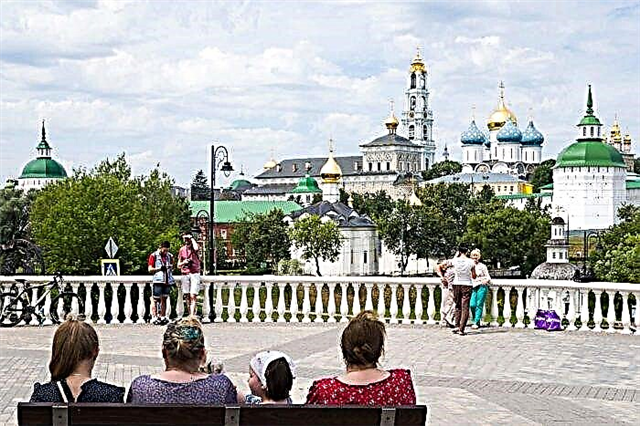
Red Army Avenue
The central street of the city. It was first mentioned in the middle of the 18th century. The street received its modern name in 1934, before that it was called Bolshedorozhnaya and consisted of two parts - Moskovskaya and Pereslavskaya. As a result of the reconstruction, few old mansions remained on the avenue. The echoes of the past are the houses of the bourgeoisie with intricate and openwork carvings that have been preserved among modern buildings.

Museum-reserve "Abramtsevo"
A 19th century manor near Moscow, where many original buildings have survived. The owner of the estate, the writer Sergei Aksakov, turned it into a center of Russian culture, and the next owner, Savva Morozov, continued the tradition of creating a creative atmosphere for people of art. The guests of the estate were Gogol, Turgenev, Vasnetsov, Chaliapin. It was in Abramtsevo that Repin painted the famous painting "Girl with Peaches", and Serov did not wait for the painting.

Krasnogorsk shopping arcade
They were erected at the beginning of the 20th century on Krasnogorskaya Square, which has long been the city's trade center. They were built in the popular Russian style at that time. The design uses tower-like roofs, towers with spiers, columns and red brick walls. Currently, the building of the Trading Rows houses the pilgrimage center of the Trinity-Sergius Lavra, monastery shops, cafes.

Attractions of the Trinity-Sergius Lavra
The most important objects on the territory of the Lavra, which are worth seeing first.
Trinity Cathedral
The oldest surviving building of the monastery. The cathedral was built at the beginning of the 15th century. The main shrine is the relics of St. Sergius of Radonezh. For the iconostasis of the cathedral, Andrei Rublev painted the famous Trinity icon. The original iconostasis has not survived; the painting of the temple was made in 1635 based on the works of Rublev and Cherny. The four-pillar cathedral was built of white stone in the style of early Moscow architecture.
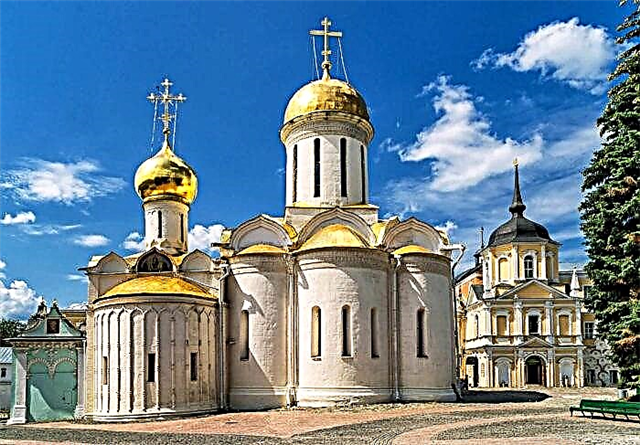
Assumption Cathedral
The largest temple of the Lavra, founded at the behest of Ivan the Terrible. Built in 1559-1585 and resembles the Assumption Cathedral in the Moscow Kremlin. The cathedral is designed in a strict and laconic form. It is decorated only with an arcature-columnar belt. The graves of Boris Godunov and his family are adjacent to one of the edges of the cathedral. The iconostasis and painting of the Assumption Cathedral are canonical and integral - they are made in a single color scheme with a common background.

Holy Spiritual Church
Built in 1476 by craftsmen from Pskov. A small but tall church resembles a watchtower in its appearance. The church belfry is interestingly executed - its six pillars are located above the church. The decoration of the Holy Spiritual Church is richer than that of the Trinity Church. Pilasters, semi-columns, terracotta patterns, kokoshniks are used. The frescoes in the interior of the church were made in 1655, the iconostasis in the 19th century.

Church of the Nativity of John the Baptist
Built in 1699 as a gate church. It is erected over a large arched doorway, which serves as a continuation of the Holy Gates. The five-domed church has a Moscow baroque style, which is typical of Stroganov buildings. It is decorated with octahedral windows surrounded by white carved inserts, and the domes have an unusual multifaceted shape. A 17th century tiled stove has been preserved inside.

Church of St. Sergius with the Refectory
One of the largest structures in the monastery. Its construction was completed in 1692. The refectory church has an original "checkerboard" painting of the walls. The decor of the facades, consisting of columns with elaborate carvings, figured platbands and cornices, a parapet with sculpted shells, gives the temple the appearance of a palace. Stucco moldings and wall paintings in the interior of the church have been preserved since the 1700s-1780s.

Church of the Smolensk Icon of the Mother of God
The construction of the church took place in 1746-1753. Empress Elizaveta Petrovna was present at the consecration of the church. The only temple in the monastery that has the shape of a circle. The sample of Elizabethan baroque harmoniously fits into the general appearance of the monastery. In the niche of the eastern wall there is a copy of the main shrine of the temple - the miraculous image of Hodegetria. The original of the icon is kept in the city history and art museum.

Bell tower of the Trinity-Sergius Lavra
Built from 1741 to 1770. The work on the decoration and finishing of the belfry alone took 15 years.Its height is 88 meters, which is higher than the bell towers in the Novodevichy Convent and the Moscow Kremlin. At the same time, the architectural appearance of the bell tower is light and elegant. The bell tower clock, made by the Tula master Kobylin, worked for 120 years. In 2002, the famous bells were cast anew - "Firstborn", "Blagovestnik", "Tsar Bell", weighing 27, 35.5 and 72 tons.

Church-archaeological office
The Church Museum, whose collection contains ancient handwritten books, ancient church objects, samples of icon painting, works of religious painting. The cabinet was founded in 1814. From 1917 to 1974, the church-archaeological museum did not function, and from 1951 the collection continued to be replenished. The museum occupies 6 enfilades of the former Royal palaces. About 30,000 people visit it annually.

Church of St. Nikon of Radonezh
The original church over the grave of the Monk Nikon of Radonezh was built in 1548. In 1623-1624, a church was erected on its foundation, which has survived to our time. It was built in the image of the Trinity Church, however, it has a smaller size and more magnificent decor. The walls of the church were painted with frescoes in 1635; only a few fragments have survived. Most of the icons were painted by the nun Juliana.

Temple of Saints Zosima and Savvaty of Solovetsky
Built at the beginning of the 17th century. This is the only tent-roofed temple in the Lavra. Its décor from a belt of kokoshniks resembles the style of ancient buildings. At the same time, the abundance of decorations on the facades makes the church elegant and festive. The temple was built on the basis of hospital wards where sick elders lived. The shrine of the temple is the ancient icon of Saints Zosima and Savvaty, who stand before the image of the Most Holy Theotokos "The Sign".

Mikheevskaya church
Built in 1734. This is the smallest church of the Trinity-Sergius Lavra. It is located above the grave of a disciple of the Monk Sergei of Radonezh. The building is made in the Baroque style, it is crowned with a Dutch roof and a dome with a cross. Oil painting and ornaments on the walls appeared in the 19th century. The miniature iconostasis was made in the 18th century. Thousands of pilgrims come to the church to venerate the relics of the Monk Micah.

Assumption chapel over the well
Built at the end of the 17th century. The chapel covers the holy spring, the well at which was erected in 1644. By its appearance, it resembles a miniature four-tier temple, crowned with a dome with a cross. The chapel is richly decorated with carved details and multicolored paintings. Against the background of the white walls of the Assumption Cathedral, the decoration of the Assumption Chapel looks elegant and festive. The painting of the walls of the chapel was made in the 19th century.

Holy water chapel-canopy
It was erected in 1872 next to the Nadladeznaya chapel and the Obelisk. In the cast-iron basin for the consecration of the water, there is a gilded copper cross, from which the holy water from the Assumption treasure flows into the basin. Water is consecrated only a few days a year. Above the pool there is an elegant tent on seven columns, which is topped with a dome and a cross. The reconstruction of the chapel took place in the 1930s-1950s.

Tomb of the Godunovs
A small stone crypt of a modest appearance is located next to the Assumption Cathedral. It was installed over the graves in 1782. The remains of Boris Godunov, his wife and son, as well as Princess Xenia are buried in the tomb. The simple structure is crowned with a gray pyramidal roof and a cross and has no decorations. There are marble plaques with names and years of life attached to the walls of the tomb.

Sights of the Sergiev Posad Museum-Reserve
The reserve includes four main sites. The most interesting museum exhibits, large historical collections and exhibitions are located here.
Sacristy of the Trinity-Sergius Lavra
Built in 1781. It is an architectural monument. The sacristy houses a unique monastery collection of church art from the 14th-18th centuries. It contains about 110,000 valuable exhibits - manuscripts and old books, icons, embroidery, gold and silver items, jewelry, painting, graphics, and decorative and applied arts. There are mundane items - for example, the home clothes of Ivan the Terrible.

Museum complex "Horse yard"
An architectural monument of 1790 is located near the picturesque White Pond. The stable farm in 1764 contained more than 700 horses. Instead of many wooden buildings where horses were kept, one large stone building was built by the decree of Catherine II. Currently, within its walls there are expositions dedicated to arts and crafts, folk art, and the history of the city.

Local history building
The two-storey building was built in 1937. The brick building harmoniously combines the features of Soviet constructivism and neoclassicism. Since 1997, it has hosted permanent museum exhibitions on various subjects. They tell about the history of the Trinity railway, urban everyday life at the beginning of the 20th century and during the Great Patriotic War, about the formation of Soviet power in the city and about the pre-war years.

Main building
The main exhibition building of the museum-reserve, located on the street of the Red Army. It exhibits famous paintings by masters of Sergiev Posad, as well as artists from Russia. Master classes and quests are held, including those designed specifically for the children's audience. Mass holidays are organized - Maslenitsa, Christmastide, Night of Museums, festivals - Horseshoe for luck, Russian matryoshka.

City churches and monasteries outside the Lavra
There are religious Orthodox sites not only within the walls of the Lavra, but also in the city itself. Among them are churches, monasteries and holy springs.
Pyatnitskaya and Vvedenskaya churches
Churches that look dissimilar to each other were built in the same year - 1547. They were called "podolnye", as they are located behind the fence of the Trinity-Sergius Lavra on the hillside. The Vvedenskaya Church is tall and narrow, similar to the works of Pskov architects. The squat Pyatnitskaya Church has an architectural style that is traditional for the works of local craftsmen. It looks more elegant and has an octahedral bell tower.

Elias Church
An ancient temple near the Kelarsky pond. It was originally built as a side-altar of the Kazan wooden church in 1645. In 1765-1773, the Ilyinsky Church was rebuilt in stone. This is the only church in the district that functioned during the Soviet era. Elias Church looks smart because of the graceful proportions and slender silhouette of the bell tower. The walls of the temple were painted in the 19th century by craftsmen from the Malyshev artel.

Church of the Resurrection of the Word
Built at the beginning of the 19th century. The original wooden church was erected in the 18th century by order of Tsar Alexei Mikhailovich in memory of the defenders of the Trinity Monastery during the Polish-Lithuanian intervention. According to information from church documents, several thousand Christians died during the siege within the walls of the monastery. Later, the church was rebuilt in stone. It is currently a restored beautiful temple of light blue color.

Spaso-Bethany monastery
The Bethany Skete was founded in 1783. In 1797, after Paul I visited the Trinity-Sergius Lavra, the skete received monastic status. By the beginning of the 20th century, the monastery reached the peak of its heyday - thousands of pilgrims visited its temples as a spiritual center. The decline of the monastery began with the advent of Soviet power - the Transfiguration Church and the Church of the Transfiguration of the Lord were destroyed. The restoration of the monastery began at the end of the 20th century.
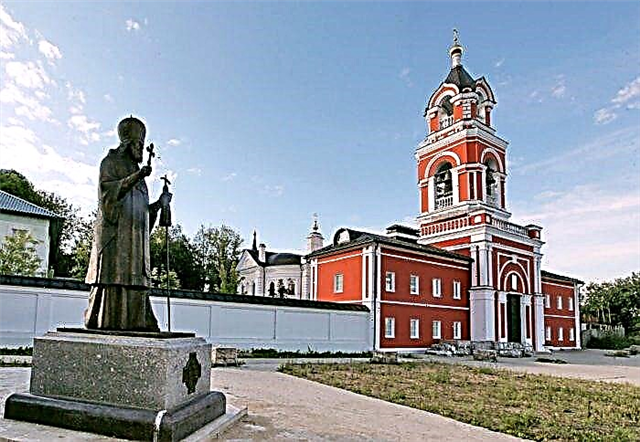
Desert of Saint Paraclete
A skete in the village of Smena, 6 km from Sergiev Posad, founded in 1858. It was founded in a secluded place, in the woods, away from common roads and buildings. The hermit elders could lead a silent life here. The structure of the skete built in 1861 - the Temple of the Holy Spirit the Comforter - has survived, the bell tower and several wooden cells have survived. The monastery was revived in 1992 and is visited by pilgrims and tourists.
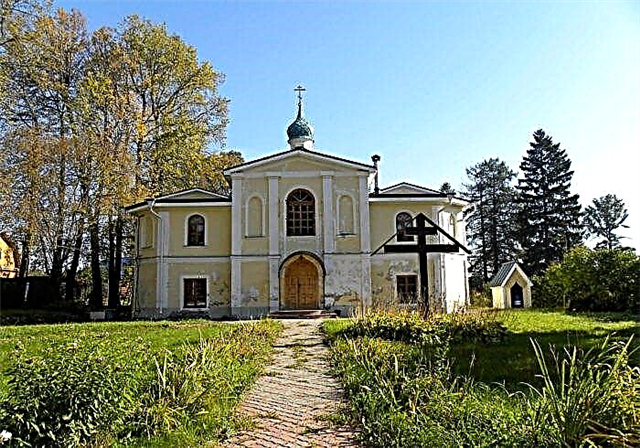
Source of the Monk Savva Storozhevsky
Located on the slope at the northern sides of the Trinity-Sergius Lavra. Named after one of the students of Sergei Radonezhsky. It is believed that the holy spring began to clog after his long and persistent prayers. In the 1990s, the territory at the source was ennobled - a year-round bathhouse and a locker room were erected. A chapel was built nearby. Holy water containers and a bathing shirt can be purchased at the church stall.

Sergiev Posad museums and theaters
Cultural and educational places popular with tourists, which are not included in the museum-reserve and are worthy of no less attention.
N.D.Bartram Toy Museum
Keeps a unique collection of toys from all over the world. The museum was founded in 1918. It was incredibly popular in the 1920s. Only the Tretyakov Gallery visited him more often. Since 1980 it has been housed in an old mansion by the Kelarsky pond. The collection of the museum consists of 150,000 toys - old Russian folk, Western European and Russian times of the XIX-XX centuries, Soviet industrial, as well as a collection of paintings.

Museum of Peasant Life "Once Upon a Time"
An ethnographic private museum located next to the studio of the founding artist of the museum. The collection is based on Russian household items - clothes, toys made of clay and wood, jewelry, irons, samovars, dishes. Exhibitions of urban craftsmen in the field of arts and crafts are held. Guided tours are organized around the museum. Many exhibits can be touched with hands, which is especially popular with children.

Exhibition Hall "Bells of Russia"
Opened in 2015 in a shopping center building. Visitors are told about the history of bells, their production technologies. Visitors will see the operating bells with their own eyes, hear their sound. The exhibits of the museum are varied - beels, with the help of which the residents of the city were informed about significant events, belfries of different sizes, flat bells. The unusual instrument "Singing Trumpets" is of particular interest.

Yuri Gagarin Palace of Culture
Opened in 1954. The construction of the palace of culture was declared popular - the building was erected by residents of the city on Saturday and Sunday. The palace turned out to be not only beautiful, but also with a luxurious interior design - crystal chandeliers, walls decorated with stucco moldings, carpet paths and shiny parquet. DK collectives successfully perform not only on their native stage, but also take part in international festivals.

Gardens and parks of Sergiev Posad
Nice and beautiful places for walking and outdoor recreation.
Park "Skete ponds"
The picturesque landscapes of the park attract many visitors at any time of the year. It is located near the Gethsemane and Chernigov sketes. The artificial park Skitsky pond was founded in the 18th century. The Gethsemane Pond was previously used for fisheries. The ponds have a rotunda, moorings and fishing bridges. Alleys are laid in the park, there is a skate park, sports and fitness grounds, children's play areas.

Pafnutyevsky garden
Spread out at the walls of the Trinity-Sergius Lavra. It is believed that cabbage was previously grown on this territory for the monastery brethren. The vegetable garden was later planted with apple and currant trees, and a recreation park was founded in the 1920s. Now it is a landscaped green area with pedestrian alleys, benches, beautiful flower beds and a well-groomed lawn. The brick pavilion of the Onion Tower and the old fence have been preserved since ancient times.

Kelarsky pond
It was created in 1552 by the order of Adrian Angelov, the cellar of the Trinity-Sergius Lavra. At the beginning of the 19th century, a stone dam was built on the pond, and in the 1970s, a flood protection system. The north-western part of the pond not far from the Toy Museum is ennobled - there are children's playgrounds, a small park, and a restaurant. The pond is inhabited by swans - black and white. A small house was erected for them.

Monuments and memorials of Sergiev Posad
The most famous historical and modern monuments and sculptures of the city.
Memorial of Military Glory
It was opened in 1960 on the site of the mass grave of the fallen soldiers in honor of the celebration of the Victory Day in the Great Patriotic War. The memorial includes granite slabs with more than 200 names of the fallen soldiers - residents of Sergiev Posad, and the Eternal Flame, lit by fire at the Tomb of the Unknown Soldier in Moscow. On memorable dates, flowers are laid at the memorial, solemn events are held.

Monument to Sergius of Radonezh
The monument to the saint was erected at the entrance to the Trinity-Sergius Lavra in 2000. The creation and installation of the monument was carried out with donations from the townspeople. The monument was consecrated by the Patriarch of All Russia Alexy II. The bronze sculpture is 5 meters high. The sculptor Chukharkin and the architect Zhuravlev portrayed Sergius as parting people to live in harmony and peace, with a scroll of monastic commandments in their hands.

Monument to Peter and Fevronia
The monument was erected in 2005 for the 700th anniversary of the Reverend Sergius of Radonezh. K. Chernyavsky became the sculptor of the monument. In the hands of the patron saints of the family and marriage, the icon of the Most Holy Theotokos, hares are sitting at their feet. The sculptures are made of bronze. The height of the monument is 3 meters. The monument is located in a picturesque place near the Kelarsky pond. According to the city tradition, newlyweds often come to the monument.

Monument to the parents of Sergius of Radonezh
Opened in 2014 on Red Army Avenue. The monument is located in a small green park, benches are installed nearby, there is an observation deck. The monument depicts the parents of St. Sergius - Mary and Cyril, together with three children - Stephen, Peter and Bartholomew (in the future Sergius). The bronze sculpture, 3.5 meters high, is installed on a rectangular pedestal. The sculpture was created by Konstantin Chernyavsky.

Sculpture "The Miracle of the Birds"
Located on the observation deck of Blinnaya Gora. This is a picturesque place with a beautiful view of the Lavra. The author of the unusual monument is Maria Tikhonova, many of whose works are the decoration of the city. She portrayed the Monk Sergius of Radonezh, to whom doves flock. The image symbolizes the legend according to which beautiful birds flocked to Sergius during prayer, foreshadowing the appearance of disciples and followers.

Memorial sign to those who suffered for their faith in Christ during the years of persecution
Installed in 2012. The author of the project is Maria Tikhonova. The memorial sign was opened at the initiative and at the expense of the Pavel Florensky Foundation. It is located next to the place where the priest and scientist Florensky lived, who was shot in 1937. The sculpture is a cross that broke through the stone surface. It symbolizes the power of faith. The pedestal of the monument is also made of red granite in the form of a cross.


